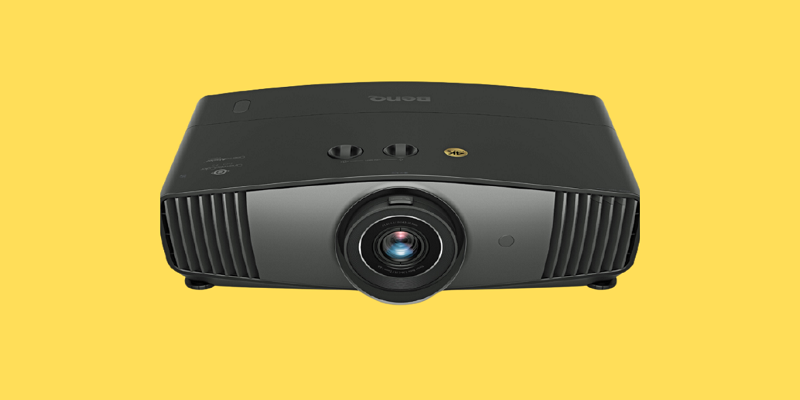 In today’s world, projectors are the most significant electronic equipment because of their versatility in displaying desired pictures and films. They are available in a wide range of sizes and shapes which are made by some different firms. This means that the visual signal from an external source like a DVD or Blu-ray player, laptop, or gaming console is sent into the projector
In today’s world, projectors are the most significant electronic equipment because of their versatility in displaying desired pictures and films. They are available in a wide range of sizes and shapes which are made by some different firms. This means that the visual signal from an external source like a DVD or Blu-ray player, laptop, or gaming console is sent into the projector
How Many Watts Does A Projector Use?
However, in this article, we’ll go through how many watts does a projector use. Are you ready? Let’s get started.
So, How Much Power Does a Projector Use?
The power consumption of projectors varies depending on the kind and brand. Larger appliances can require between 150W and 800W, with the smallest gadgets drawing around 50W.
When it comes to power consumption, brightness is one of the most critical settings, since it is one of the most demanding features when it comes to wattage consumption. Because of this, you may adjust the brightness of your projector to control its power usage.
Projectors with rechargeable batteries and an estimate of their power consumption:
1.) Battery-Powered Projectors:
Portable or pico projectors are a new kind of battery-powered projectors, which are also known as portable projectors. Internal Lithium-ion batteries are used in battery-powered projectors to power the projector and its internal components, just like in smartphones.
A battery-powered projector requires anywhere from 10 to 90 watts of electricity, depending on its size and capability. Battery-powered projectors, such as the Viewsonic M1 small, require 8W of electricity. On a full charge, it may last about 1.5 hours.
2.) LED Projectors:
Is it ever been a mystery to you how much power an LED projector consumes? If you answered yes, please continue reading!
In terms of size and functions, LED projectors are a perfect match for battery-powered projectors and normal projectors. LEDs are used as the light source in LED projectors, they require very little power, so you won’t notice a difference in your energy cost.
The power consumption of LED projectors can range from 30 to 150 watts, depending on the model. LED projectors such as Vankyo Leisure 3 utilize an average of 50W of power when they are running.
There are a lot of LED projectors available for under $300 these days. Many of these projectors use less than 100W of electricity, despite their high price.
3.) Digital Light Processing (DLP):
Digital Light Processing (DLP) projectors utilize the earliest projection technology that is still relevant in the modern era of technology. Even the most basic DLP projectors have 5-8x the brightness of LED projectors.
The DLP projector’s high power consumption may be its most significant drawback. At an average of 150-350W, DLP projectors use a lot of electricity. Viewsonic PA503W, a popular DLP projector, typically draws 260W of electricity. The light source is a 200W bulb, which uses the greatest electricity…
Lamp life is another issue with DLP projectors. DLP projectors require a light bulb that lasts between 2000 and 3500 hours and can only be operated for three to four hours at a time. DLP projectors are provided with a variety of projector settings to address this issue and extend light life. Power consumption is reduced in these settings by dimming the bulb’s brightness.
4.) Laser Projectors:
DLP and LED projectors have their share of drawbacks, but laser projectors have a slew of advantages over their predecessors. Laser beams are used as a light source in this sort of projector to display images onto the projection screen.
Laser projectors employ LASER technology that is completely safe. Using it for a lengthy period is not a problem. However, the power needs of LASER technology are rather significant. Laser projectors often need more than 250W of electricity when operating normally.
360W is the typical amount of power that a well-known laser projector like the Vava 4K UST uses in normal settings. Laser projectors’ power consumption might vary depending on the brand of projector you use.
How to exactly measure a projector’s power consumption:
Up to this point, you’ve probably gotten a sense of how much power certain projector types need. Power consumption can vary greatly across projectors and the way they are used.
Isn’t it crucial to know how much electricity your projector is consuming?
Real-time power consumption data may be obtained by using a device called an electricity monitor. The P3 P4400 is an extremely popular electricity usage monitor device known as ‘Kill A Watt.’
To use it, all you have to do is plug it into a standard electrical socket. Later, you may hook your projector’s power cable into the electricity use meter and switch on your projector to assess its power consumption. You may switch between several readings such as volts, amps, watts, VA, Hz, power factor, kilowatt-hour, and so on using this gadget. This device.
As a result, the P3 P4400 will display your projector’s accurate power usage data. You may also use this device’s KWH function to get an hourly readout of how much power your projector uses.
Conclusion:
There are a wide variety of projectors to choose from since they have so many features and options. A projector should have all the functionality you need, not only be power efficient. We hope this article has given you a better understanding of the power consumption of a projector.
Thank You!
- How To Clean a Projector Lens - December 1, 2022
- How to make a projector screen with a sheet? - November 11, 2022
- What can I use as a Projector Screen - November 10, 2022
